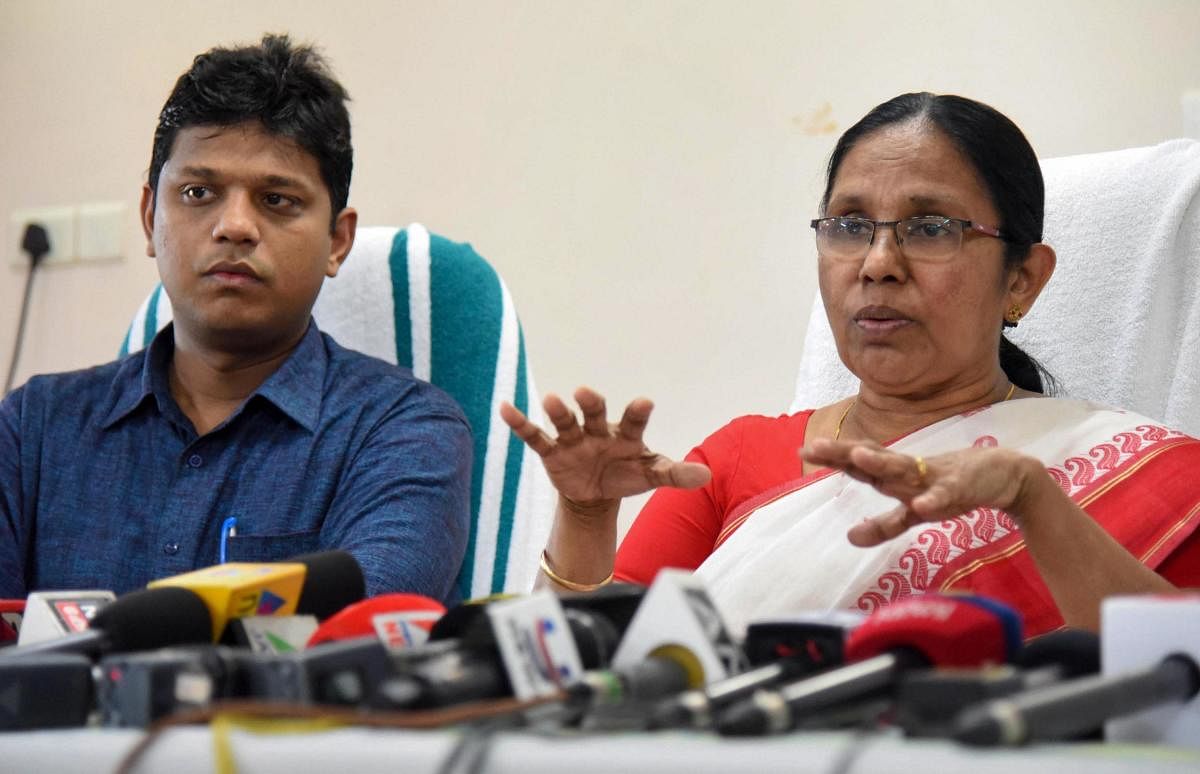
Kerala became the toast of the international media for the effective way in which it tackled the Covid-19 pandemic early on. On May 14, The Guardian praised Kerala Health Minister KK Shailaja for her leadership, calling her ‘The Coronavirus Slayer’ and ‘Kerala’s Rockstar Health Minister’. The article noted that as soon as reports emerged about the virus from Wuhan, the minister consulted medical experts and, after a meeting of a rapid response team on January 24, set up a control room and instructed medical officers in the state’s 14 districts to do likewise. Kerala also adopted the World Health Organisation (WHO) protocol of ‘test, trace, isolate and support’ to tackle the pandemic. When the first visitors arrived from Wuhan and later from the Gulf and European countries, Kerala was well-prepared. Kerala’s experience in controlling the Nipah virus in 2018 also proved handy.
When the countrywide lockdown was imposed from March 25, Kerala had the highest number of Covid-19 patients in the country after Maharashtra in the initial weeks. Yet, three months later, Kerala ranks among the states with the lowest number of infections, and a Covid-19 fatality rate of just 0.5%, as against the national average of 3%. Whereas Gujarat, with the fourth-highest number of infected persons, reports the highest fatality rate (5.5%), more than that of Maharashtra (4.3%). Despite a spike in Covid-19 cases in Kerala recently due to returning migrants, Kerala has reported only 25 Covid-related deaths so far, as against 1,906 deaths in Gujarat.
As is well-known, right from the 60s and 70s, the United Nations and international development agencies have praised the Kerala model of development. Although Kerala lagged other Indian states in terms of economic growth, it was noted that in terms of social and health parameters, such as literacy levels, life expectancy and infant mortality rate, Kerala’s performance was like that of the developed countries. But during the 2014 general elections, Narendra Modi and the BJP unleashed propaganda extolling the virtues of the ‘Gujarat model’ of development. It is therefore appropriate to review how the two states have fared during the Covid-19 pandemic.
Although Gujarat ranked among India’s industrially advanced states even before Modi became chief minister there, in terms of quality of life indicators, Gujarat lags Kerala even today. Literacy level in Kerala at 94% is much higher than in Gujarat (79%). As per the 2019 National Health Profile, infant mortality rate (IMR) in Kerala was just 10% as against 30% in Gujarat and 38% in rural Gujarat. Under-5 mortality rate in Gujarat was 49%, compared to 12% in Kerala. Poverty level in Gujarat was 16.6% compared to 7% in Kerala as per 2011-12 estimates. Per capita income (net state domestic product) in Kerala was estimated at over Rs 2 lakh as against over Rs 1.9 lakh in Gujarat during 2018-19.
The disparity between the two states is more glaring in terms of health infrastructure. Using data from a study by Princeton University on state-wise hospital infrastructure in India covering the public and private sectors, it is seen that as against the WHO norm of one doctor per 1,000 population, Kerala reported 1.68 registered doctors per 1,000 population, compared to 0.97 for Gujarat. The number of nurses per 1,000 population in Kerala was 8.52, compared to 2.33 for Gujarat. Kerala reported 2.81 hospital beds per 1,000 population, as against Gujarat’s 0.94. In terms of ICU beds and ventilators per 1,000 population these figures for Kerala were 0.14 and 0.07 respectively, compared to Gujarat’s 0.05 and 0.02.
The urban-rural divide is also more glaring in Gujarat. As per Rural Health Statistics for 2018-19, although Gujarat had a higher number of Primary Health Centres (PHC) than Kerala, the average rural population served by a PHC in Gujarat is double that in Kerala. Gujarat even reported 92 PHCs without any doctor whereas there were no such PHCs in Kerala. The Niti Aayog’s Health Index (HI) comprising of 23 indicators for 2017-18 clearly show that Kerala leads other Indian states with an HI of 74; Gujarat trailed at 63.5.
Kerala’s progressive policies since decades, investment in public health and education, robust local government institutions, a well-functioning public distribution system in urban and rural areas, community mobilisation, apart from aggressive testing, tracing, isolation and treatment of vulnerable or infected people has enabled Kerala to tame the Covid-19 pandemic. While lakhs of jobless, hungry migrant labourers in some states made a beeline to return to their home states, Kerala took good care of them by setting up over 4,600 relief centres housing about 1.5 lakh migrant labourers. Besides, all households were given free rations for three months to cope with the lockdown. The crowning moment for Kerala was the recovery of a 93-year-old man and his 88-year-old wife from Covid-19 despite having co-morbidities.
Gujarat’s sorry state of affairs is due to corruption in the purchase of defective ventilators which led to a spike in Covid-related deaths; problems in enforcing social distancing in congested areas of Ahmedabad, return of people who attended a religious convention in Delhi, pressure from some business groups to relax the lockdown conditions, faulty delivery system which hampered aid reaching targeted beneficiaries, and lack of transparency in disclosing the Covid-19 situation in the state.
The worst indictment of the state government’s handling of the pandemic was a recent judgement by the Gujarat High Court which branded the civil hospital in Ahmedabad, where more than 45% of Covid-related deaths took place, as “worse than a dungeon”. Covid-19 has punctured an embarrassing hole in the so-called ‘Gujarat model’ of development whereas Kerala’s development experience continues to impress the world.
(The author is an economist)